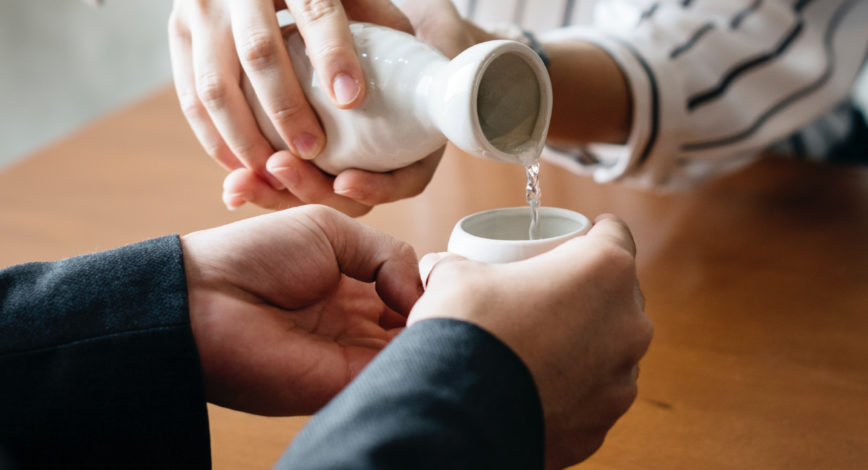
Class
In the brewing process, there are a lot of ways to produce sake and with different method of brewing there is a different class of category in the sake market.
You can find classification and categorization of sake below to identify which sake produced in which method.
Class by rice polishing ratio and brewed alcohol
With brewed alcohol
- ・Futsushu(regular) 普通酒
Approximately 70% of sake is in this class. If the sake is not class in other class, it is futsushu.
- ・Honjozo 本醸造
Sake with polishing ratio under 70%(30% and above polished) and brewed alcohol added.
- ・Tokubetsu Honjozo 特別本醸造
Sake with polishing ratio under 60% and brewed alcohol added, and using special brewing method.
- ・Ginjo 吟醸
Sake with polishing ratio under 60% and brewed alcohol added.
- ・Daiginjo 大吟醸
Sake with polishing ratio under 50% and brewed alcohol added.
Without brewed alcohol
- ・Junmai 純米
If no brewed alcohol added but not so much of rice polished, it is Junmai
- ・Tokubetsu Junmai 特別純米
Sake with polishing ration under 60% and no brewed alcohol added, and using special brewing method
- ・Junmai Ginjo 純米吟醸
Sake with polishing ration under 60% and no brewed alcohol added
- ・Junmai Daiginjo 純米大吟醸
Sake with polishing ration under 50% and no brewed alcohol added
Category by storing period and season
- ・Shinshu 新酒
Shinshu means new sake, and traditionally shinshu means sake of the current year vintage.
Thesedays, shinshu and shiboritate has similar meanings and it means fresh sake right after brewing
- ・Koshu 古酒
As a contrast to shinshu, koshu means old sake and traditionally meaning old vintage.
These days, the meaning is more to aged sake.
- ・Natsuzake 夏酒
Natsuzake means summer sake, and it is new word in recent market.
It tends to be fresh and high acidity to make people drink easily in hot and humid summer in Japan.
- ・Hiyaoroshi ひやおろし
Hiyaoroshi or Akiagari is sake of autumn.
It design to age over summer to release in autumn season, and have thick and rich taste.
Category by heat pasteurization process
- ・Namazake 生酒(Hon Nama 本生)
Sake is normally heated twice before delivery: after fermentation and before delivery.
Namazake means no heating process before delivery, so easy to go off but have more genuine taste.
- ・Nama Chozoshu 生貯蔵酒
Heat sake only once before delivery.
- ・Nama Tsumezake 生詰め酒
Heat sake only once after fermentation.
Category by Joso process
- ・Arabashiri 荒ばしり
When squeeze moromi, first squeeze is Arabashiri.
tends to be rough but powerful taste. Slightly coloured white.
- ・Nakagumi 中汲み/Nakatori 中取り
After arabashiri it is Nakgumi or Nakatori. It has more balanced flavor and taste compared with other.
- ・Seme 責め
Last squeeze is Seme. Alcohol is slightly higher and have richer taste.
- ・Fukuriduri 袋吊/Shizukutori 雫取り/Tobinkakoi 斗瓶囲い
If not squeeze by machine , but hung to collect drops it is Shizuku
No noise in the taste, smooth and clear.
Other
- ・Genshu 原酒
If no blend and no water added after fermentation it is Genshu.
Genshu tend to have strong characteristic and straight taste.






